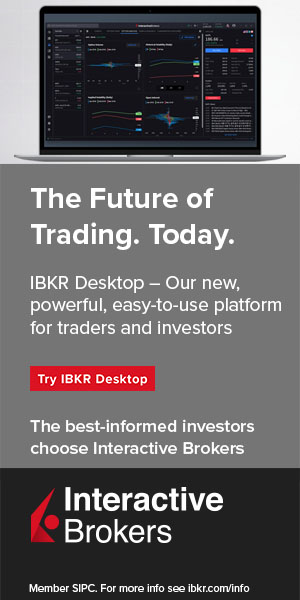
Retirement has changed dramatically in recent years, reshaped by demographic shifts, economic factors, and changing work patterns. People are living longer in more economically uncertain circumstances.
Permanent or lifelong employment is no longer guaranteed and is increasingly being replaced by gig work. Some traditional investments are not delivering enough to support retirement fully.
According to the US Centers for Disease Control (CDC), the US life expectancy for both sexes is 76.4 years. For males, it is 73.5 years; for females, it is higher at 79.3 years.
The United Nations Population Division reports that the 2022 median estimate for global life expectancy at birth is 71.7 years.
This figure represents a dramatic increase over several decades, considering that 1950 life expectancy worldwide for both sexes was 46.5 years. By 2050, they expect the figure to increase to 77.3.
Every improvement comes at a cost. As we transition to older societies, thanks to better healthcare, sanitation, education, and anti-hunger efforts, we also increase the resources needed to support longer retirement.
Many retirees still need to determine how to construct a sound retirement portfolio that will enable them to live comfortably in the coming decades. Here, we discuss how alternative investments like Bitcoin IRAs could change retirement planning and help create resilient investments that withstand the unpredictability of the future.
Why Bitcoin Matters as an Investment
Bitcoin is more than just a trendy investment for the technologically savvy. It has approached a new level of credibility, weathering many storms and being adopted by institutions with the massive launch of Bitcoin ETFs early this year.
Bitcoin represents the future. It was launched when the world was reeling from a global financial meltdown in 2008. The collapse of Lehman Brothers shook people’s faith in banks. In November 2008, the Bitcoin whitepaper was introduced to a cryptography mailing list.
For the first time, the world learned of a decentralized electronic cash system that was fully peer-to-peer. It did not need trusted third parties to validate transactions.
While it had few initial believers, the cryptocurrency developed a dedicated global community composed of miners, engineers, traders, marketers, educators, entrepreneurs, investors, and everything in between.
As the first decentralized currency, it broke barriers among countries, jurisdictions, and systems. It required nothing more than a network of volunteers running nodes, mining Bitcoin, and using the currency to support and propagate it.
The initial premise of Bitcoin was to provide a new way to transact independently of large financial institutions and governments. It took a while for the idea to take hold in a significant part of the world population.
However, with time, the idea began to make sense to more people, expanding to companies and institutions. Today, El Salvador has even adopted Bitcoin as legal tender.
Surprisingly, a currency created with a contrarian vision does well as an investment. From 2011 to 2021, it became the world’s best-performing asset, outperforming major asset classes. After a brief hiatus in 2022, it rebounded as the top-performing asset class.
The newly launched Bitcoin ETFs have further supported its ascent, propelling price upward and increasing institutional demand. ETF issuers, like BlackRock and Fidelity, include the world’s most prominent fund managers.
While its performance has exceeded all expectations, it remains a risk asset, often exhibiting a negative correlation with the US inflation-adjusted bond yield.
Bitcoin is viewed as a hedge and safe haven asset in times of economic uncertainty—similar to gold. This thesis has been supported by its performance amid a soaring consumer price index (CPI) in 2022, leading to interest rate hikes at the fastest pace ever. We remain in a state of heightened uncertainty.
Bitcoin rose 1000 percent within four years since the pandemic started. By comparison, gold, a traditional safe haven asset, grew by only 33 percent. US treasuries—considered risk-free assets—have declined by 12 percent since March 2020.
With its history, performance, utility, and technology-forward nature, Bitcoin could present a standout opportunity to build wealth—or, at the very least, protect purchasing power. Zooming out over an extended time frame, not many assets have improved their holders’ purchasing power by this much. An increase in purchasing power is the primary goal of investing.
The Rise of Bitcoin IRAs
Bitcoin IRAs represent the next generation of retirement investments. A Bitcoin IRA works like a self-directed individual retirement account (SDIRA). Self-directed IRAs allow you to invest in alternatives—precious metals like gold, collectibles, real estate, silver, and digital currencies. This feature is absent in traditional IRAs.
Unlike conventional IRAs, which you typically set up through brokerage firms, Bitcoin IRAs require extra steps.
They have additional components, including custodians, crypto exchanges, and storage solutions. These IRAs have specialized crypto custodians. They may use exchanges to facilitate the buying and selling of crypto assets in your Bitcoin IRA. They also use proprietary storage methods to keep your crypto assets safe after you buy them.
Photo by Dmytro Demidko on Unsplash
Advantages and disadvantages of Bitcoin IRAs
Investing in a crypto IRA—specifically a Bitcoin IRA—offers several advantages, including tax-advantaged growth, diversification, and digital asset security. Incorporating digital assets into a retirement portfolio could maximize investments’ compounding effect as you minimize immediate tax liabilities.
Directly buying Bitcoin will subject you to capital gains tax. You are taxed if you sell your crypto assets at a profit. By contrast, you could gain more by purchasing a Bitcoin IRA with its tax-free growth—up to a certain amount per annum—and tax-free withdrawals in retirement.
However, remember that, like any investment, Bitcoin IRAs come with disadvantages. These include high volatility, account fees, trading fees, and other risks. Crypto, by nature, is highly volatile, with sharp fluctuations. It could be unsuitable for those approaching retirement age who need stability and liquid assets. Those with a longer time horizon could be better suited for high-risk investments.
Depending on the provider, investors could incur high fees for setting up a self-directed IRA account for trading. You could also rack up maintenance and custody fees from the same provider.
Also, remember that every cryptocurrency trade will incur fees from your service provider’s trading partner and custodian. Look out for blockchain processing fees if they are charged on top of your regular charges.
Diversify Your Retirement Portfolio with Bitcoin IRAs
US census data shows that fewer Americans are meeting their retirement goals. Approximately 50 percent of women and forty-seven percent of men between 55 and 66 have no retirement savings.
Moreover, Social Security is insufficient to fund a comfortable retirement.
Many approaching retirement must build a secure portfolio for future comfort. Provided retirees have a longer time frame for investment and saving, they could diversify their retirement portfolios with Bitcoin IRAs.
The future of retirement planning is becoming more connected with digital assets. Buying Bitcoin through your IRA is one way to take advantage of growth if you understand the risks involved. To understand the full risks and tax implications of your crypto IRA investments, it is best to discuss them with a financial advisor familiar with Bitcoin or crypto IRAs.


 Hot Features
Hot Features











